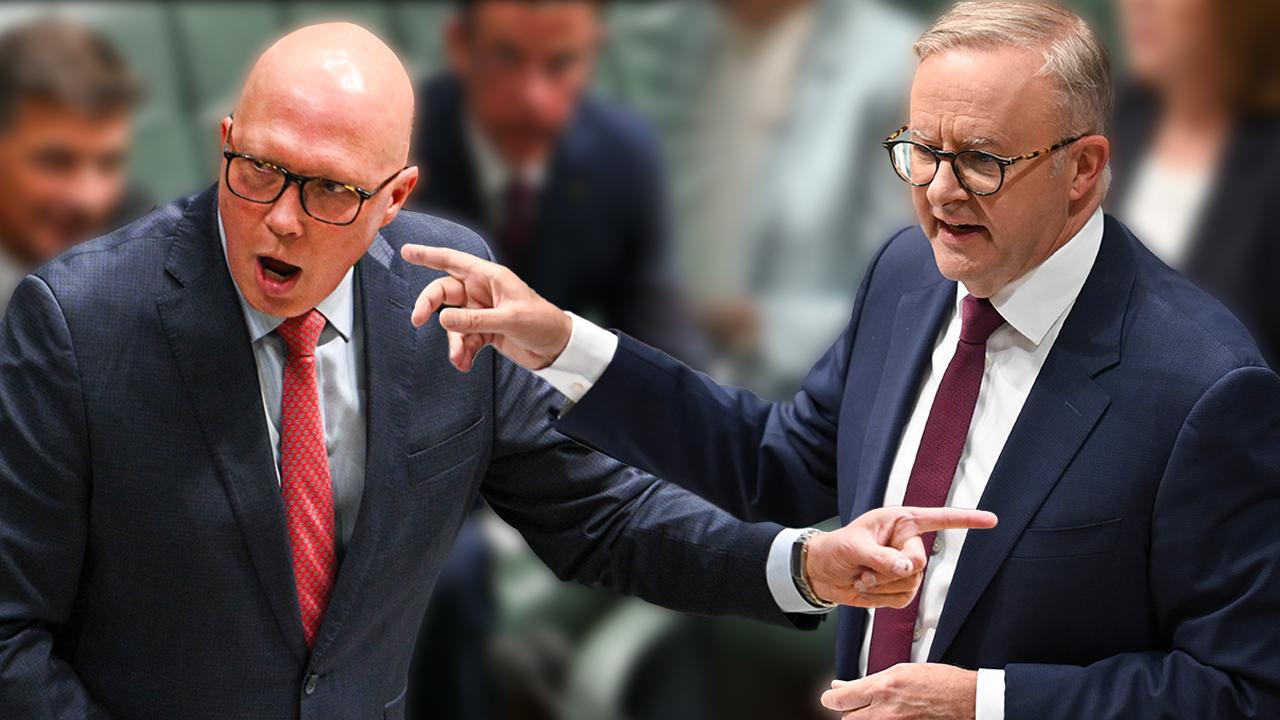Albanese Vs. Dutton: A Critical Analysis Of Their Election Pitches

Table of Contents
Economic Policies: A Tale of Two Approaches
The economic platforms of Albanese and Dutton represented fundamentally different approaches to managing Australia's economy.
Albanese's Economic Plan: Investing in the Future
Albanese's economic plan focused on responsible fiscal management alongside strategic investments designed to stimulate long-term growth. This approach prioritized improving the lives of everyday Australians through targeted support and infrastructure development.
- Increased childcare subsidies: Aiming to reduce the cost of childcare for families and increase workforce participation.
- Wage growth focus: Promoting policies aimed at boosting wages and reducing income inequality.
- Reinvestment in education and training: Investing in skills development to improve productivity and future-proof the workforce.
- Cost of living relief measures: Implementing measures to alleviate the pressure of rising living costs on Australian households.
The Albanese government planned to fund these initiatives through a combination of responsible spending and targeted tax policies, aiming for a sustainable and equitable economic future. The effectiveness of these proposals, however, remains subject to ongoing economic analysis and future performance indicators. Independent economic modelling of the plan’s impact varied, highlighting the complexity of economic forecasting.
Dutton's Economic Vision: Fiscal Restraint and Private Sector Growth
Dutton's economic vision emphasized fiscal restraint, tax cuts, and deregulation to stimulate private sector growth. This approach prioritized reducing the size and scope of government, arguing that this would unlock economic potential and create jobs.
- Lower company taxes: Reducing the corporate tax burden to encourage investment and job creation.
- Reduction in government bureaucracy: Streamlining regulations to reduce red tape and improve business efficiency.
- Focus on private sector job creation: Encouraging private sector investment as the primary driver of economic growth and employment.
- Control of inflation through fiscal restraint: Managing government spending to maintain price stability.
Dutton's plan placed significant emphasis on reducing the national debt and deficit through a combination of spending cuts and tax reforms. Critics argued, however, that these measures could negatively impact essential public services and exacerbate inequality. The long-term impact of these proposed policies requires further scrutiny and analysis.
Climate Change: Diverging Paths to Net Zero
The candidates' approaches to climate change represented a significant point of divergence in their election pitches.
Albanese's Climate Change Stance: Ambitious Targets and Renewable Energy
Albanese's Labor Party committed to ambitious emissions reduction targets and significant investment in renewable energy. This involved a transition away from fossil fuels towards a cleaner energy future.
- Renewables target: A commitment to achieve a substantial increase in renewable energy generation.
- Investment in clean energy technologies: Funding research and development in clean energy technologies to drive innovation.
- Climate adaptation strategies: Implementing measures to prepare for and mitigate the impacts of climate change.
- Focus on jobs in the renewable energy sector: Creating jobs in the growing renewable energy industry.
Albanese's plan aimed to position Australia as a leader in the global fight against climate change, aligning with international commitments and creating new economic opportunities. The feasibility and economic impact of these commitments, however, continue to be debated.
Dutton's Approach to Climate Change: Technology and Economic Growth
Dutton's Liberal Party emphasized technological solutions to climate change, arguing for a balanced approach that prioritizes both environmental protection and economic growth.
- Technology-focused approach: Investing in research and development of clean energy technologies.
- Focus on reliable and affordable energy: Ensuring access to reliable and affordable energy supplies while reducing emissions.
- Arguments for minimizing economic disruption: Advocating for policies that minimize the economic disruption associated with the transition to cleaner energy.
Dutton’s approach focused on ensuring Australia's energy security and economic competitiveness, while still acknowledging the need to address climate change. Critics argued that this approach lacked sufficient ambition and failed to meet the urgency of the climate crisis. The international impact of this more cautious strategy on Australia's reputation also needs further consideration.
Social Policy: Addressing Key Issues Facing Australians
Both Albanese and Dutton addressed key social policy issues, but their approaches differed significantly.
Albanese's Social Policy Agenda: Strengthening Social Safety Nets
Albanese's social policy agenda emphasized strengthening Medicare, addressing cost of living pressures, and improving social services for vulnerable Australians.
- Medicare reforms: Investing in Medicare to improve access to healthcare services.
- Housing affordability initiatives: Implementing policies to increase housing affordability.
- Improvements to aged care: Improving the quality and accessibility of aged care services.
- Support for vulnerable Australians: Providing support for vulnerable groups, including Indigenous Australians.
Dutton's Social Policy Positions: Individual Responsibility and Community Engagement
Dutton's social policy positions emphasized individual responsibility, community engagement, and the strengthening of family structures.
- Policies relating to welfare reform: Implementing policies aimed at promoting self-reliance and reducing welfare dependency.
- Focus on strengthening family structures: Supporting policies aimed at strengthening families and communities.
- Community-based initiatives: Investing in community-based programs and services.
Dutton's approach prioritized individual responsibility and community empowerment, contrasting with Albanese's emphasis on government intervention and social safety nets. The effectiveness and equity of each approach remain open to debate.
Conclusion
The Albanese vs Dutton election pitches highlighted significant differences in their visions for Australia's future. Albanese presented a platform emphasizing social justice, investment in renewable energy and social programs, and a more interventionist approach to economic management. Dutton, in contrast, advocated for lower taxes, reduced government spending, a technology-focused approach to climate change, and a greater emphasis on individual responsibility. This analysis of Albanese vs Dutton election pitches provides a crucial overview; however, further research into specific policy details is strongly encouraged to ensure an informed decision about the future direction of the nation. Understanding the nuances of the Albanese vs Dutton election pitches is essential for every Australian citizen.

Featured Posts
-
 Penarol Vs Olimpia Resultado Final 0 2 Resumen Y Analisis Del Juego
May 15, 2025
Penarol Vs Olimpia Resultado Final 0 2 Resumen Y Analisis Del Juego
May 15, 2025 -
 S Jv Sea Match Preview Everything You Need To Know
May 15, 2025
S Jv Sea Match Preview Everything You Need To Know
May 15, 2025 -
 Auction Of Kid Cudis Personal Items Draws High Bids
May 15, 2025
Auction Of Kid Cudis Personal Items Draws High Bids
May 15, 2025 -
 Execs Office365 Accounts Breached Crook Makes Millions Feds Say
May 15, 2025
Execs Office365 Accounts Breached Crook Makes Millions Feds Say
May 15, 2025 -
 Tampa Bey Kucherova Triumf Nad Floridoy V Pley Off N Kh L
May 15, 2025
Tampa Bey Kucherova Triumf Nad Floridoy V Pley Off N Kh L
May 15, 2025
